Podcast: Play in new window | Download
Find easy plants for easy landscaping
Today, you’ll learn how to find the best plants for low maintenance landscaping. If you’re looking to have easy landscaping in your yard, these tips will help you find the right low maintenance plants for your yard.
Show Notes: Low Maintenance Landscaping Plants
- These tools find the right plants for your yard
- Not a list of plants
- There is no one ‘best plant’
- The best plant is the one that
- thrives in the available place
- has the desired growth structure
- has the right appeal to you and the space
- Goal: have a healthy beautiful yard with less work so you can enjoy more time doing what you love
- Low maintenance plants are incredibly important
- Bring beauty to your yard
- Enhance appeal of property
- Enhance lifestyle
- Relaxation
- Comfort
- Pride
- Enjoyment
- Reduce effort to maintain
- Require minimal care
How to pick the best low maintenance plant for your space
- Understand your space
- USDA zone
- Soil characteristics
- type
- Topsoil depth
- Depth
- Organic matter
- pH
- Episode 11
- Moisture
- Total annual
- Pattern
- Pooling/runoff
- Sun
- Time of day
- Time of year
- Total amount
- Plant selection
- Growth habit
- Size
- Propagation
- Lifespan
- Match existing conditions
- USDA
- Soil
- Organic matter
- Moisture
- Sun
- dispersive or aggressive plants
- Check local resources for listings
- State agricultural extension office
- Ex: Callary pear, bradford pear, purple loosestrife
- Recently banned for sale in OH
- Style preferences
- Find what you like that fits
- Native, exotic
- Color – foliage, bloom
- Timing – foliage, bloom
- Growth habit
- A few examples of great plants
- Works for most of US
- make sure you check for your area!
- Juniper (Juniperus virginiana)
- Native to much of northern hemisphere
- Cultivated varieties range from groundcover to medium tree
- Evergreen
- Tolerates wide range of soils and moisture
- Tradeoff: Prefers full sun
- Heart Leaved Aster (Symphyotrichum cordifolium)
- Blue late summer blooms
- Tolerates wide range of soils, moisture
- Does well in shade and sun
- Tradeoff: Prefers moderately fertile soil
- Prairie Dropseed (Sporobolus heterolepis)
- Tolerates all sorts of conditions
- Tradeoff: Prefers full sun, non-waterlogged soils
- Check show notes for low maintenance plants giveaway list
Links for today’s episode:
I’m Ben Hale your nature geek host let’s
jump in and learn how to have a healthy
beautiful yard with less work so you can
enjoy more time doing what you love
[Music]what’s up and welcome to episode 23 of
the easy living yards podcast today we
are going to be talking all about low
maintenance landscaping plants now we’ve
covered this somewhat you know here and
there in previous episodes and I will
definitely be referencing some of the
awesome content we’ve already covered in
the previous episodes but today I really
want to cover just people are always
asking about what plants do you do for
this what what are the best plants for
that and and it’s a lot of times a lot
of questions that folks like us have are
around plants you know it’s not about
design we’re not all you know designers
landscape designers we’re not all
thinking about the big picture of our
yard or or you know how it makes us feel
we just want to have some plants in our
space that works right and and sometimes
that’s all we want and and it’s hard to
think about all those other aspects and
I totally get that now now with all that
said you know I also totally understand
the importance of good design and we’ve
talked about that in some other episodes
as well but today I just want to answer
you know some of the stuff that a lot of
you guys are asking about plants what
are the right plants right and and so
let’s get into more about the plants
today as opposed to you know some of the
principles for we’ve been talking about
for low maintenance landscaping or or
that sort of thing right so we can get
out into all that stuff later in other
episodes and that sort of thing and and
for right now I just wanted to give you
the tools to find the right plants for
your yard so just to clarify today we’re
not going to be covering a huge list of
plants you know these are the best
plants for everywhere in the world
because to be honest there’s not not a
single best plant that just works
everywhere right so a low maintenance
landscape for me here in Ohio where I
currently live
is not necessarily best plant for you
even if you also live in Ohio too and
which is crazy but especially if you
live you know say in Texas or in
California or Quebec right so wherever
you are there are certain plants that
and even in a certain space that you
have so a plant in your front yard might
not be the best plant in your back yard
or plant close to the house might not be
the best plant for out by your mailbox
so these are all considerations you have
to think about with your your specific
space in mind ok so that’s why today is
not going to be a list of plants that
are I could give you a list of plants
that are my favorites but to be honest
that wouldn’t work for most of you so
we’re gonna instead I’m gonna give you
the tools to figure out what are the
right plants for your yard okay and I
just want to clarify a little bit more
that there is even even if we drill all
the way down to let’s just talk about my
backyard even if we drill down to my
backyard there is no one best plant
because there are multiple plants that
will work in that condition but there’s
not necessarily one best plant because
each plant has a specific function that
it serves and it also yields a specific
thing free for us in different ways too
so structurally its growth patterns its
color all that stuff you know and so
it’s based on not only the plant and how
it thrives in your space but also what
you want out of this space and so that’s
different for every person
at different times of the year and
different times in our life too so this
could change as well and so there is no
one best plant and you know now just to
walk over exactly what I said
the best plant is the one that thrives
in the available space that you have
that you’re talking about and again this
could be a very specific space such as
what plant works best by my mailbox
right so is the best plant is the one
that thrives in the available space has
the desired growth structure that you’re
looking for and also has the right
appeal to
you and the space that it fits in so for
example you might really like a certain
flower but it just doesn’t really look
quite right you know as a foundation
planting nice to your house it just
doesn’t match it architectural II it
doesn’t you know hide the the form that
you want or it doesn’t accentuate the
form that you want and so for that
reason it’s just not the right plant for
that space even though you might love it
personally okay so let’s rewind a little
bit or I guess kind of step back a
little bit and and think about why we’re
even talking about what’s the best plan
right so it’s not just what’s the best
plant for that you like or whatever you
know that fills a space again our goal
here is to have a healthy beautiful yard
with less work so that you can enjoy
more time doing what you love that’s the
most important part folks is we’re
giving ourselves back our own time
because we don’t want to be using that
time working our yard or trying to
figure out better plants or you know
googling what’s the coolest yard ideas
or whatever we want to just have our
beautiful yard so we can enjoy it and we
we can move on with our life to do more
important things with our life okay
I love landscapes but that’s what they
are is their landscapes they’re not our
life goal and and so here we’re trying
to free ourselves from our landscape by
creating our beautiful landscape so that
we can do what we love more okay and so
with all that said let’s kind of get
into now why low maintenance landscape
plants are important and then also how
to pick the best plant for your space
okay so as far as importance I think it
you know this might go without saying
but I just want to be clear that low
maintenance plants are incredibly
important because they allow us to meet
our goal of having a beautiful yard with
less work so we can enjoy more time
doing what we love so low maintenance
plants should bring Beauty to your yard
enhance the appeal of your property and
that could also you know enhance your
property value or perceived value it
should enhance your lifestyle these
plans should enhance your lifestyle
through relaxation through comfort
through pride through enjoyment among
many other things but those you know
just the ones that come to mind for me
right now they should also reduce your
effort to maintain them by definition
you know being low maintenance plants
they shouldn’t require a lot of work to
maintain so that’s what we’re looking
for is what’s when we’re talking about
what is the right plant for your space
from a growth and thriving standpoint
it’s what’s the right plant for your
space that can maintain itself can grow
be happy be resistant to disease by
itself without us having to constantly
nurture it ok these plants that we’re
talking about here you know plants in
general just have evolved for millennia
to grow and thrive right and so we want
to make sure we’re picking the right
plants that can grow and thrive in our
conditions that mimic the conditions
that they evolved in to grow in and
thrive in ok
these again you know they should require
minimal care so it’s kind of goes hand
in hand with reducing effort to maintain
but also just you know we don’t have to
think about and we don’t have to care
for them we don’t have to nurture them
once they’re established you know
sometimes these things do take a little
bit of time to establish some of these
plants once they’re you know that once
they’ve taken root and they’ve really
gotten hold in your landscape it should
be just kind of you know take a glance
set of everyone so everyone take a
glance at them every once in a while
kind of see if they’re doing ok and then
just forget about them enjoy them for
what they are and and let them do what
they’re meant to do you know it’s kind
of like you know when you have a dog
right and you you uh you take your dog
outside and you see it playing right the
dog it just it loves what it’s doing
because it’s doing what it’s meant to do
well
well plants when they’re put in the
right space with the right conditions
they also love to do what they do so
they’re gonna grow in there they’re
going to thrive in that space and that
what we want okay so now that we
understand why low maintenance plants
are so important let’s figure out how to
choose the right plant for your space so
when we’re talking about our space it’s
really important to understand your
space you’re talking about before you go
ahead and start looking for plants so
even before you blew up you know a
nursery catalog or go start googling
whether the best plants for your yard in
in Ohio or whatever before you start
doing any of that make sure you
understand your space because it’s not
just the general area you’re in but your
specific space has certain requirements
that are very important now that said
it’s also good to know your regional
conditions as well and that ties into
here as well so it’s both important to
know your regional climate and
conditions as well as your microclimate
in micro conditions so on your specific
space in your specific area so I
mentioned two already two examples one
could be my backyard the other could be
let’s just state you know let’s take the
example of the mailbox right you have
your mailbox right out front on the
street in the corner and you’re trying
to you know kind of spruce it up there
might not make it look like it’s just a
stick with a box on the end of it right
you’re trying to you know put some
plants around it make it look pretty
maybe make a little garden around it
right so that’s a specific area that
could be very different in condition
compared to the rest of your area
compared to your backyard right and so
it’s good to know your specific
condition as well as the regional
condition and that’s the point I’m
trying to make okay
so first with understanding your space
you want to know your USDA zone and if
you’re not familiar with this already
I’ve mentioned it in several episodes
the USDA zone is basically a climatic
zone that is based on your average low
temperature in the cooler part of the
year and so as you can imagine the
farther up north you go across the
United States the the cooler it gets
okay and so the lower your zone number
and and so for southern Ohio here for
example we’re a much lower number than
then southern Florida and we’re a much
higher number than northern United
States and into Canada okay
and so there are similar climatic grades
as well for other parts of the world if
you’re listening to another part of the
were from another part of the world okay
and so it’s very important to know your
USDA zone most plants when they have a
their little nursery tag on them it
tells you what zone they grow in and
when you’re researching stuff online as
well it tells you what zone this plant
grows in from you know say zones three
to nine so that will tell you it grows
as cold as zone three and as warm as
zone nine okay and so we’re looking for
the plants that fit into our zone okay
all right so next you want to understand
your soil characteristics so I recommend
you get a soil test if you haven’t done
so already you can usually get in touch
with your local Extension Office your
USDA Agricultural Extension office and
they can run a soil test for you either
for free or for very low cost and it’s
well worth it and if you can it’s worth
also doing multiple samples across you
know different parts of your property to
get an understanding of how your soil
might be different so when it comes to
your soil some of the things that are
important to understand are the soil
type the topsoil depth the the depth of
your overall soil so you have your
topsoil which is the high organic matter
area hopefully hopefully you have a few
inches of that but the reality is most
of us in suburbs that are younger than
say about 30 ish years have very little
topsoil because a lot of time what’s
customary is during the development
phase the topsoil scraped off and
removed for development and it’s sold to
local landscape suppliers and then the
houses are developed and in the places
where that’s not done usually just the
process of compaction it roads this and
erosion during construction erodes the
topsoil way to where you have very
little left anyway so there’s usually
not a whole lot done to preserve the
topsoil during development and it takes
a long time for it to grow back
especially under turf grass lawns so
the reality is it’s good to know your
topsoil death and how much you have and
that you can do by just kind of digging
a hole and you’ll see kind of your
richer darker houmous area of top
hopefully hopefully it’s a few inches
sometimes it’s you know very little so
but it’s just a darker color than the
rest of your soil and then underneath
that you’ll see kind of it’ll graduate
into your mineral soil so for us in
southern Ohio it’s a clay based mineral
soil and it’s kind of like a reddish not
quite red but orangish color and
sometimes a little bit of grayish color
based on your substrate material and and
so you’ll start to see your bare mineral
soil underneath your topsoil and so it’s
good to know your topsoil depth as well
as your mineral soil depth and basically
how deep do you go until you hit bedrock
for some places that’s about three
inches other places it’s several feet
and so it’s good to understand that
because that also dictates what types of
plants can grow in that condition you
also want to know the amount of organic
matter you have in your soil so that
kind of goes hand-in-hand with your top
soil depth so the organic layer is the
area of topsoil and you also want to
know your soil pH and I go into a lot
more depth in all this stuff stuff in
episode 11 so I strongly encourage you
if you’re not familiar with
understanding what what parts of soil
you need to understand go check out
episode 11 and I’ll have a link in the
show notes ok
beyond soil without spending too much
that you guys can tell I love soil right
oh yeah every time I mentioned soil I
end up talking like whey lager that I
planned on it so I hope you guys love
soil as much as I do and that it’s not
boring because how can this stuff be
boring right it’s super cool anyway all
right off my nerd podium okay
so soil is important also important to
understand is moisture okay so when I’m
talking about moisture I’m talking about
your total annual rainfall so it’s good
to know about how much rain do you get
each year do you get five inches do you
get fifty inches do you get eighty
inches there’s some places that are get
that much you know it
you’re in the Appalachian Mountains
regions of Virginia I think that’s how
about how much you get is that it’s
almost like a temperate rainforest there
here in southern Ohio we get about 42
ish inches of rain per year and if you
live in about let’s see Las Vegas area
you get about five inches of rain here
so there’s huge differences in that
amount of rainfall and what plants can
thrive under those conditions
okay so understanding your total annual
rainfall is important also the pattern
of rainfall you get do you get all of
your rain in one or two rain events a
year or is it spread out with a lot of
different shower periods throughout most
of the year or maybe during certain wet
seasons of the year those patterns are
very important to understand and can
greatly influence what plants can thrive
in that condition okay the next piece is
we’re now getting out of the regional
piece of moisture and we’re going down
to the very local piece when it comes to
moisture and that is where does the
water go on your property specifically
the space you’re considering right now
just water pool up on it does it run off
of it during rain events or does it kind
of sit there for a little bit and then
soak in or does it stay there over a
couple days this is all very important
to understand when you’re considering
different types of plants that grow in
that condition some plants love having
waterlogged soils and they can thrive in
it and it gives them great tolerance for
other parts of the year some of them can
withstand that most of the year others
can tolerate the you know wet soggy
times and then that helps them withstand
long drought periods after that some of
them can’t tolerate what roots at all
and so it’s really important to
understand how does the water interact
with the space you’re considering okay
and now fond moisture the next piece is
sunlight so how much Sun do you get is
is really often listen on plant tags and
so understanding your space and how much
Sun it gets but not only that what time
of day does it get Sun
what time of year does it get son for
how long and what’s the and then also
understanding what’s the total amount of
sunlight so those are the kind of sounds
similar but here’s the difference so the
time of day that it’s in sunlight really
factors in to not only sunlight but heat
as well okay
so if your plant is really susceptible
to heat stress for example if it gets
early early day sunshine it will
probably do much better in that location
than if it were a late day sunshine
space because the hint of the plant is
not tolerant of heat stress if that
makes sense
so during your harder periods of the day
the plant might kind of shut down its
biochemical processes and just kind of
sit there and even might look a little
wilty or droopy because is overheating
basically and so that plant is better
suited for a cooler part of your
landscape and cooler part of the day to
be active and so thinking of a space
where it can fit into their early
morning period would be better for
suited for that plant okay so that’s
enough on your understanding your space
so just to recap real quick
understanding your USDA zone your soil
characteristics your moisture and your
son will go a really long way to helping
you understand your site conditions
there’s of course there’s we could talk
for hours on site conditions what are
all the parameters that are necessary
you know
from anything from like mineral content
you write to toe to whatever and to wind
shear right there’s all this stuff that
could factor in but right now I wanted
you to just focus on these main areas
and and that will go a long way to
helping you selecting the right plants
for your space okay so now the plant
selection bit okay when we’re talking
about plants we want to think of several
things
before we get into the matching existing
conditions there’s some other bits as
well so your growth habit your whether
it’s dispersive or aggressive
what are your style preferences
as well as matching your existing
conditions so we’ll kind of get into all
those but I just wanted to give you a
quick overview of what I’m about to talk
about okay so growth habit when it comes
to plants matching your space is very
important but also important is the
growth habit of the plant okay so now
we’re talking about like the physical
characteristics of the plant and how it
matches with your space so if we’re
talking about our little mailbox that
we’re trying to spruce up it would kind
of be foolish to plant you know a a
Colorado blue spruce right next to your
mailbox because it’s gonna grow and
eventually completely engulf your
mailbox and it doesn’t functionally
serve this space so you want to
understand the growth habit of your
plant and how it’s going to interact
with your space okay so when you’re
thinking about this it’s important to
understand the size of the plant so the
the mature size of it as well as the
growth rate so how long is it going to
take to reach that mature size how is
how is its propagation pattern so does
is it have a spreading habit for example
it is it shoot up suckers along it these
these are all important things to
understand and also what’s the lifespan
of the plant you’re considering is it an
annual so have having an annual in that
space maybe it’ll look good for a season
but then you’ll have to reconsider
planting it again next year or is it a
short-lived perennial and is that okay
so if it’s a short-lived perennial will
it divide by itself or received by
itself every couple years or is it
something you have to divide every
couple years or is it a long-lived
perennial is it going to outlive you and
in the same space you know is it going
to eventually outgrow this space as well
so these are important things to
consider okay
so aside from growth habit now let’s
talk about matching those existing
conditions so we just did our little
homework on our site our region as well
as far as climate and conditions right
so how do we match the plant to that
well it’s it’s pretty simple actually
you basically start searching for plants
that that grow in your USDA zone
have the right soil type or our tolerant
of the the soil type that you have and
that’s you know all those
characteristics we listed out pH is one
you know I kind of glossed over but it’s
incredibly important the organic matter
that you have in your soil the moisture
level and the sunlight you have there
those are all very important
considerations so basically looking for
the plants that fit the conditions that
you have is much easier than trying to
alter the existing conditions on your
site okay and that is the if there is
like one trick or magical piece of
low-maintenance landscape design it is
that it’s instead of trying to alter
your site or your location to fit the
plant that you want it’s finding the
right plants that fit and grow and
thrive in your site okay and and that’s
really the key to low maintenance
landscaping and that’s what we’re
talking about here so now that you
understand your space you can go out and
find the right plants to fit your space
okay so we’ve talked about matching our
existing conditions we’ve talked about
the growth habits it’s in the next piece
of check and this is more of a I guess
you could call it like an ethical thing
or a responsibility thing is
understanding whether the plants you’re
considering are dispersive or aggressive
and you know some people like to use the
word invasive you can use that as well
if you like so these are plants that
even though they may be planted in your
specific space how do they affect the
neighborhood around you the region
around you how do they affect the houses
down the street are you going to have
plants popping up around you that while
they might look pretty they might be
disrupting things as well and so these
are plants that kind of escape the
landscape the designed space of our
homes and they get into the environment
and they can really disrupt things so
it’s it’s worth considering and checking
out to make sure that the plants you’re
planting aren’t wreaking havoc on the
spaces around you and it might seem like
you know okay well they’re gonna look
more pretty or whatever but if they’re
if there’s something that’s expanding
into
a space that is potentially sensitive or
could be you know established with other
plants that are in fragile relationships
already because we’ve kind of you know
taken away a lot of forests and natural
spaces across this this continent maybe
you know we could actually be
introducing stuff that’s out competing
the the plants that really need that
space to grow if that makes any sense
okay so what you can do here to
understand if your plant is dispersive
or aggressive or so-called invasive is
to check local resources for listings of
plants that are discouraged you can
check with State Agricultural Extension
offices and folks you know we all have
access to Google if you can be listening
to this podcast I’m sure you can check
out Google as well and Google can be a
very helpful resource tool for
understanding some of this stuff so some
examples here in my specific area of the
Midwest is the calorie pair or the
Bradford pear so these are selected pear
trees to have small tiny fruits and
beautiful blooms they get you know a
nice pear shaped structure to the tree
as well and they’ve been selected for
landscape use well unfortunately these
trees have caused massive problems in
the edge habitats across our Midwest
region where they take over a space
along with other invasives and it’s
really difficult for a lot of the native
plants to establish there and so so it’s
actually just recently been banned for
sale in Ohio completely in landscape
nurseries across the state so that’s the
extent where it’s caused problems has
now been finally realized many years
after introduction that that it’s
actually it’s causing such a problem
even though it’s kind of a pretty tree
for a few months or a few weeks of the
year with its flowers it actually causes
a lot of problems the rest of the year
by out competing a lot of plants that
should be in that space
similarly there’s another plant in Ohio
called purple loosestrife and this plant
is it has beautiful flower spikes on it
bright pink flowers looks really great
pretty well it takes care of itself
pretty well basically and it also grows
in wet conditions very well well it
turns out that this plant while it is
really beautiful and pretty easy to
maintain once you establish it that it
also is really a dispersive in expansive
in marsh conditions so anywhere there’s
these wet conditions it’s really
disrupting a lot of natural ecosystems
in waterways that taking over very
sensitive native plants and very
sensitive space along water edges that’s
you know pretty sensitive habitat so
it’s actually causing a lot of problems
in and just like the the pears the
cultivated pears this purple loosestrife
has also been banned for sale in Ohio so
it goes to show you that it’s kind of a
little bit you know late on that front
but that’s where it’s important you know
whatever your plants you’re considering
check to see if it’s considered as a and
invasive and this primarily goes for the
exotic plants so is it an exotic
invasive sometimes the the term invasive
is a little bit I would say misused
where it just means that a plant grows
really well in a space and that by
itself doesn’t mean it’s an invasive it
just means it’s growing where we don’t
want it and so it’s good to check up on
that and just see kind of do your
research and figure out okay is this
plant going to take over an ecosystem
where it shouldn’t be in the first place
okay so with that the next piece is your
style right we haven’t talked about that
and that’s really important for making
sure that it’s a plant you’re going to
enjoy that you’re going to be happy with
and you know if it’s not something you
enjoy and you’re going to be happy with
it that well I guess that means the
contrary right you’re going to be
dissatisfied and you’re not going to
like the choice you might end up havin
to
replace it if it really bothers you and
so we want to make sure that whatever
low maintenance plants you put in your
space they match your style preferences
and they also match the need for the
space so when we’re talking about
finding our plants find what you like
that fits in the space it could be
native it could be exotic but you know
make sure if it’s what your preferences
are there and if you want I do have a
previous episode on natives and exotics
as well you can check out it should have
the color that you want so that could be
the foliage the bloom and also meet the
timing that you want and this gang goes
for both foliage and blooming so does it
you know change color in the fall does
it have a bloom when you want to have
blooms so does it bloom in late summer
or does it blue on an early spring or do
you want to mixed plantings of blooms so
you get blooms all through the year of
different plants at different heights so
so you can get really in-depth with this
stuff pretty quick but just make sure it
matches the Preferences of what you want
maybe you just want something that kind
of fills the space in looks Green has a
nice structure to it has you know maybe
some unique leaf patterns and that’s all
you want and that’s fine too
so just kind of make sure whatever your
preferences are make sure you’re clear
on them try and picture them as best you
can which can be difficult and then go
find what fits in that space okay all
right now you guys you know I can’t be
talking about plants too much without
just getting into a few specifics so
even though I said this isn’t gonna be a
big long list episode I know you guys
would love to hear a few examples of a
few plants that are awesome and I can’t
help myself anyway so lucky for you I’ve
got a couple of plants here that I’d
love to talk about and I’d love to have
you try them out in your landscape if it
fits right and if it fits your needs as
well and your desires and your
preferences so if it doesn’t don’t
consider these plants so the plants I’m
talking about here I’ve only pulled out
three so of the whole world of plants
these are only three plants and they do
not equal the best plants in the world
and they do not equal the best plants
for
you’re space these are just three plants
that I like they work in a lot of
conditions across the United States that
do not work in all conditions there I
don’t know if there is a plant that were
maybe the dandelion right maybe we just
need to start loving the dandelion I
don’t know if there’s a plant that works
in all conditions even just in the
United States let alone the rest of the
world right so with that said you know
these these work for most of the United
States make sure you check your specific
area in your specific conditions and the
first plant I like this one because it’s
so versatile because it does kind of
have a you can have it where it kind of
has a cultivated look or even a very
naturalistic look depending upon the
variety or just straight species of
plant that you select and so this plant
and it could be anything from a ground
cover to a tree as well so just for the
sheer versatility of this plant I really
like it and that’s the juniper tree okay
so the juniper tree also very close
relative to cedar so you may be familiar
with one or the other but these both of
these species are so when I’m talking
about the juniper tree I’m talking
specifically about the scientific name
Juniperus virginiana and the cedar is
Juniperus communis so they’re very
closely related and I’m listing out the
scientific names not to be a nerd which
let’s face it guys I have a podcast
about plants and landscaping right so I
add the lost cause there but I’m not
doing it to assert my nerdism it’s to be
specific and to make sure because of so
many different common names that we are
understanding what the right plant we’re
talking about is and I have these
spellings in the show notes so I don’t
expect you to phonetically understand
what I’m saying there and just know what
to look up but I do have it written in
the show notes so you can check out the
names of these plants if you’re trying
to research them so okay with that aside
finished let’s talk about the Juniper so
the Juniper and cedar are native to much
of the northern
this fear there are tons of cult of
cultivated varieties that range from
anything from a ground cover to a
medium-sized tree and the ground covers
can be a very small ground cover or kind
of like a spreading ground cover that
goes all the way up to like six feet
wide and with these you get some
different foliage color from like your
dark evergreen color to kind of like a
grayish hue as well so there’s some
really cool varieties out there it is
primarily an evergreen tree so that’s
really cool too and and why I’m bringing
this up now this tree up or shrub or
ground cover whatever you want to call
it this the Swiss Army knife of a plant
is that it tolerates a huge wide range
of soils and also a very wide range of
moisture so given multiple soil
conditions anything from it this tree
can grow on like bare rock cliffs and
and it also of course can grow in like
really rich soils at the same time too
so it can kind of establish in and I
like kind of scrubland meadow pastures
that are really starting to get rich
anything from I guess degraded soils
also very rich soil meadows to rocky
crags right so it’s I think you get the
picture it’s pretty tolerant of a lot of
conditions now there is one trade off
with this plant as with most plants
there’s you know again I wouldn’t call
it necessarily a trade off but from the
plants standpoint but for us it might be
so the the Juniper does prefer full Sun
I have seen these eastern red cedars
growing in partial Sun conditions in the
woods where there’s like semi open
glades but the reality is it does not
prefer that condition it’s a little more
sparsely I guess the foliage is a bit
more sparse when it’s in that condition
it can do it can grow just fine there
but it’s not going to be the ornamental
specimen you may be you might be looking
for so just something to consider there
okay so juniper highly recommended from
a versatility standpoint and also
because
it’s an evergreen as well it it’s nice
to have some evergreens to consider okay
so next plant what’s next right so I
wanted to have some examples of a tree
slash ground should cover slash rabbi
guess but primarily that I guess when I
first thought about those thinking of a
larger longer lived plant like a tree
well I also wanted to give you a
herbaceous perennial so like you’re a
perennial flower type plant as well as a
grass and so the as a perennial flower
herbaceous example I have the heart
leaved aster and I selected this one for
specific reason is because people are
always asking well what do I grow in
shade right I have a bunch of hostas
right hostas are so common for shade
conditions and they look really pretty
they are exotic so if you if you prefer
to go native with some stuff what’s
something that I can plant that’s native
to the United States or maybe just not
it maybe it’s just not a hosta right
hostas are kind of overused sometimes
now so what’s something that can grow in
shade well the heart leaved aster which
I’ll attempt to pronounce this one
scientific name is Cynthia trichome
cordifolia
okay the heart leaved aster has
beautiful late summer blooms it
tolerates a huge wide range of soils
again it also tolerates a wide range of
moisture it does really well in shade
and it can also live in Sun so that’s
really cool because there’s a few plants
that do well both in mostly full shade
all the way to full Sun and so this is
one that does pretty well across so a
wide range of light conditions now I did
say it tolerates a really wide range of
soils the reality is it does have a
preference though it does prefer
moderately fertile soil so if you have
like just like hardpan soil this this
plant is probably not for you but if you
have kind of like okay soil like most of
us do in our yards this guy I’ll do all
right basically if you can grow a lawn
in your soil it’s probably fertile
enough
to try and grow this guy okay and the
cool thing again is that this is a
herbaceous perennial plant that does
pretty well in shade and that’s really
cool and you get these really pretty
blue flower clusters on as well in the
late summer so there you go
so juniper heart leaved aster now for a
grass
I really recommend prairie dropseed now
admittedly for for prairie dropseed it’s
a grass and some people hate that but
think about next time you’re driving
down the road looking at different
landscapes look how often grass is used
it’s a beautiful texturizing agent for
lots of different designs both as a
ground cover as an accent as his winter
texture for those of us that live in
winter areas it grasses are so versatile
and they they they just provide that
beautiful vertical structure in the
garden space so prairie dropseed is a
beautiful plant and it actually when
it’s in bloom even though the flowers
aren’t striking the it has a beautiful
scent to the bloom as well so that’s
something really cool now prairie
dropseed
is a shorter growing grass it’s not one
of your super tall grasses but it
tolerates all sorts of conditions and
the one trade-off here is it does per
for full Sun and it prefers not to be in
just totally waterlogged spaces so if
you’re looking in a space that’s just
really really wet this probably isn’t
the right grass for you but aside from
being really wet and really shady this
grass is awesome so something to check
out okay so I have to stop myself
because we could talk for hours on all
sorts of different plants and I’m by no
means an encyclopedia of plant knowledge
but every day it seems I’m discovering
new plants and it’s really awesome I
love talking about plants and learning
about plants and all the different
characteristics of each of them all the
benefits of different plants and their
interactions and stuff but I do have to
limit myself
I said only three plants today that’s
all we’re doing and if you guys do want
to learn some more plants you could
plant I have a cool list I’ve put
together so you can check the show notes
for a low maintenance plants list that
you can get dropped right in your inbox
and and it’s a nice loot that I have a
couple more there too but you know not
to be overwhelming but I think I’ve have
about ten plants on there that you can
check out that are great low maintenance
plants that work in most areas of the
United States again it’s really hard to
have a comprehensive list of stuff that
works everywhere because it’s just
something that’s so difficult to attain
so with that said I recommend if you
want to hear or learn about more plants
check out that low Maenads plants list
and all the resources i’ve listed or
mentioned today are listed in the show
notes so you can check out the show
notes as well now if you guys want to
learn more of course I’ve mentioned it
before and I’ll mention again I offer
consultation and and if you really just
want to dive deep into your landscape
and understanding what you can do to
make the greatest impact in your
landscape to increase beauty and save
time spent on maintaining your landscape
so you can do more to do the things you
love in your life
consider consulting with me and you can
go over to easy living yards calm slash
consulting and you can read about all
the options that are available to
consult with me and with that guys
thanks for tuning in and make sure you
live in passion and make tomorrow better
than today
[Music]you
you


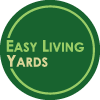
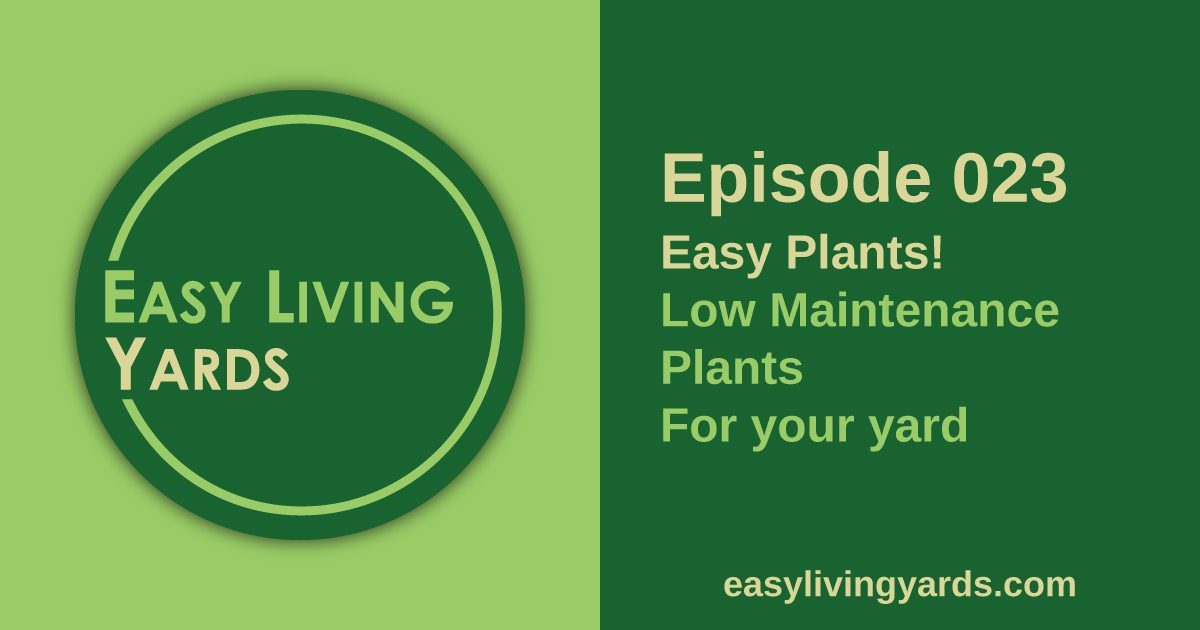
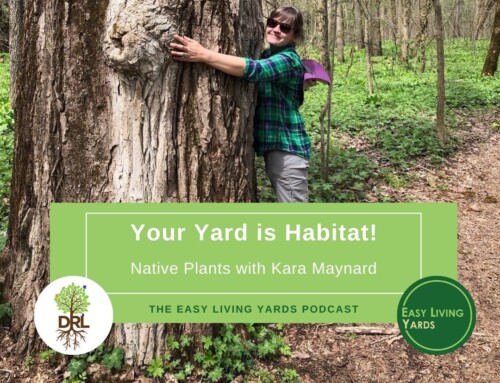

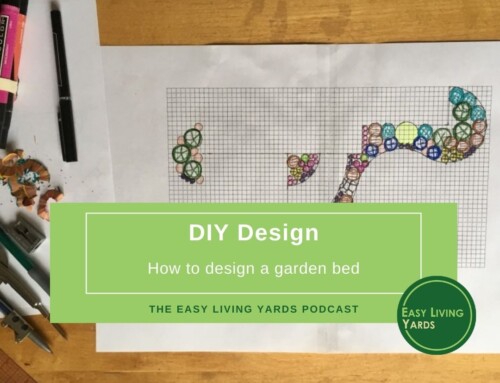

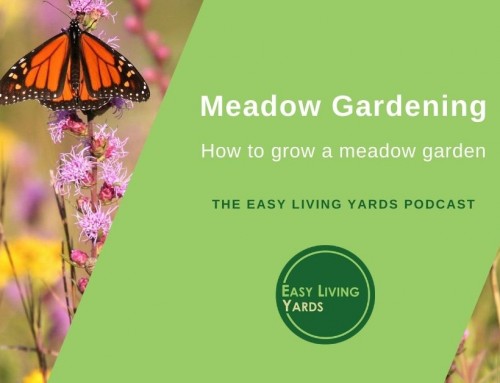
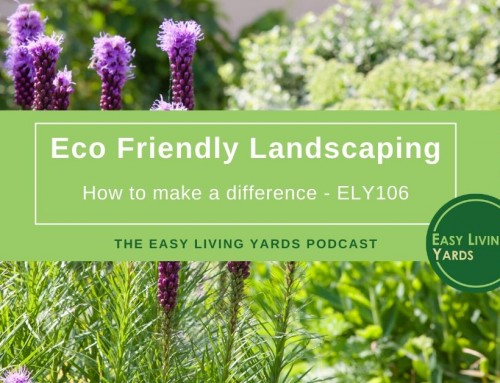
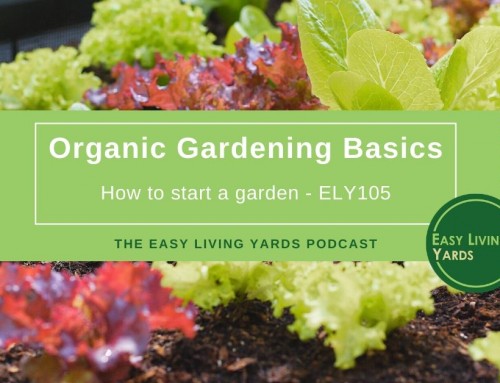
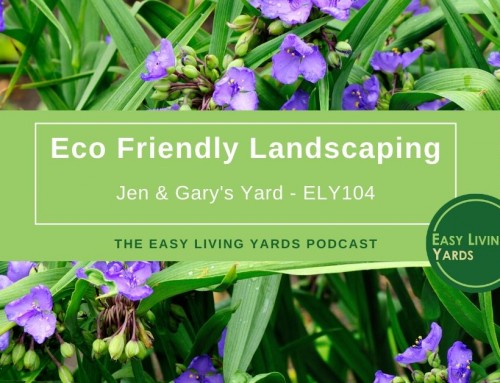
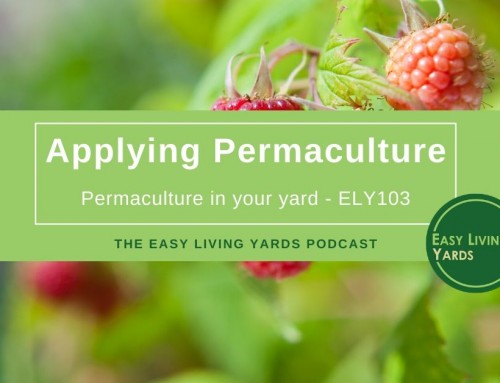
Leave A Comment